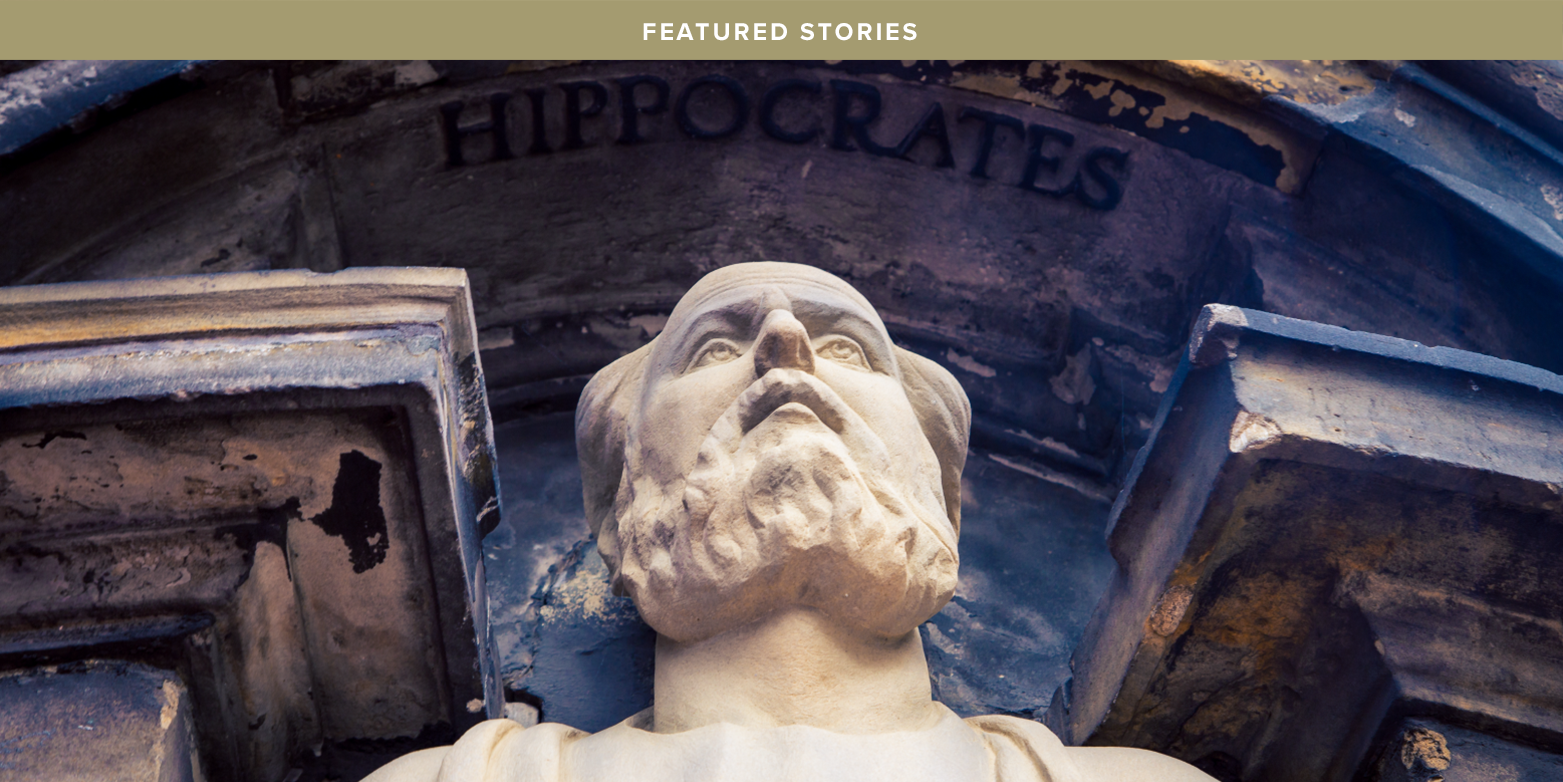Life is Short, Art is Long
The saying is credited to Hippocrates (died ca. 375 B.C.), the father of medicine. It was the first of his Aphorisms, a compilation of pithy statements and handy maxims wrung from the experiences of a long life as an itinerant physician. In fact, he coined the word aphorism, and so holds a privileged place in the tradition of moral instruction as well.
His star as a medical authority was eclipsed in the nineteenth century, when powerful microscopes revealed causes of disease about which he could only have guessed. His humoral theory of disease—the notion that our illnesses stem from an imbalance among our essential bodily fluids, blood, bile, and phlegm—ossified over the centuries and led to dubious practices such as bloodletting and cupping. We should, however, remember him instead for his conviction that it is the body—that is, nature—that heals itself. Today, men and women who have grown rightly suspicious of a medical industry whose practices have been shaped by technologists and trial lawyers are unknowingly returning to the essential principle of Hippocratic medicine. His constant teaching was that we should resort to surgery and pharmaceuticals only when it is absolutely necessary, and that the constant, central concerns of the healer should be sleep, diet, and what he spoke of as having good air to breathe, but which we may find more helpful to think of as exercise and fitness.
Aristotle, himself much indebted to the Hippocratic tradition, understood art to be a reasoned capacity to make. In the case of the physician, whose role is to assist the body’s work of healing itself, we may well wonder just what is made by the art. The answer, of course, is a judgment. For Hippocrates, the physician’s judgment was a composite one, consisting of diagnosis, prognosis, and regimen. Each element of this eminently intellectual work consisted in relating the immediate circumstances to the affordances of nature. The diagnosis was a judgment about how these symptoms relate to the known patterns of disease and, if possible, the hazarding of a name and a cause. The Hippocratic treatise on epilepsy, “The Sacred Disease,” remains as a model of judicious empiricism, displaying just the sort of serene and reserved judgment that we all want our doctors to make about what ails us. The prognosis was a looking ahead to the likely course still to be run by the illness, and the regimen was the physician’s prescription for the course of sleep, diet, and air that would best suit this patient suffering from these symptoms.
Simply to rehearse these elements of the medical art is to understand why Hippocrates led off his Aphorisms with such a stark admonition. The complete saying is stern indeed: “Life is short, the art long, opportunity fleeting, experiment treacherous, judgment difficult. The physician must be ready, not only to do his duty himself, but also to secure the cooperation of the patient, of the attendants and of externals.”
Such seriousness is, to be sure, what is required by the art itself, which ministers to the very wellsprings of life and typically does so in the presence of anxiety about disability or even death. And because the causes of disease and death are many and powerful, whereas our knowledge of the hidden causes of life and health is limited, and further because our bodily complexions are so highly variable from one person to the next, we instinctually prefer an older, experienced physician to a younger one, even if the younger one seems to be more clever and technologically adept.
The experienced doctor—or artist of any kind—has also had more opportunities to fail and thus to learn the limits of the craft. Art finds its principles in nature, that is, in the timeless forms of things, but its practice is in the things themselves, the manifold and multifarious things that the poet aptly called counter, original, spare, and strange. The art is long, then, because for it to be practiced well, it must be practiced with humility. This truth applies supremely to the physician’s art, but to the teacher’s, the painter’s, and the conductor’s as well. Whether the performance be a symphony, an icon, or a lecture, it is always fallible, and for it to go well, reason’s native confidence must be bridled by the wisdom that comes from experience, lest the artist should overreach and miss the mark.
We also remember Hippocrates with gratitude for his celebrated Oath, recently the subject of a thoughtful reflection by T. A. Cavanaugh (Hippocrates’ Oath and Asclepius’ Snake: The Birth of the Medical Profession, Oxford). The physician who so ably taught about medicine’s difficulty also insisted that it serve the whole human good, rightly understood, and so has left us an example as noble as it is essential today.







